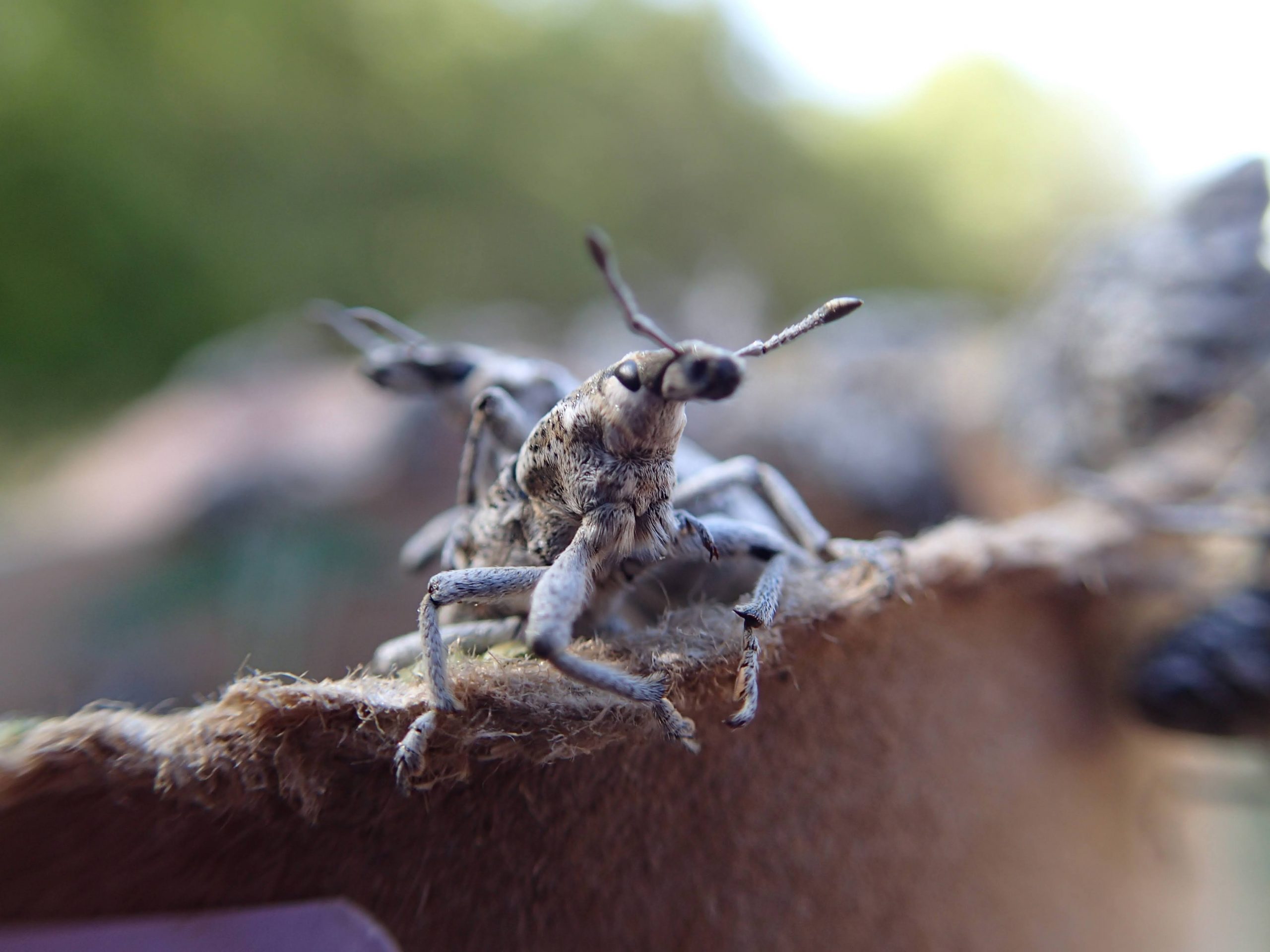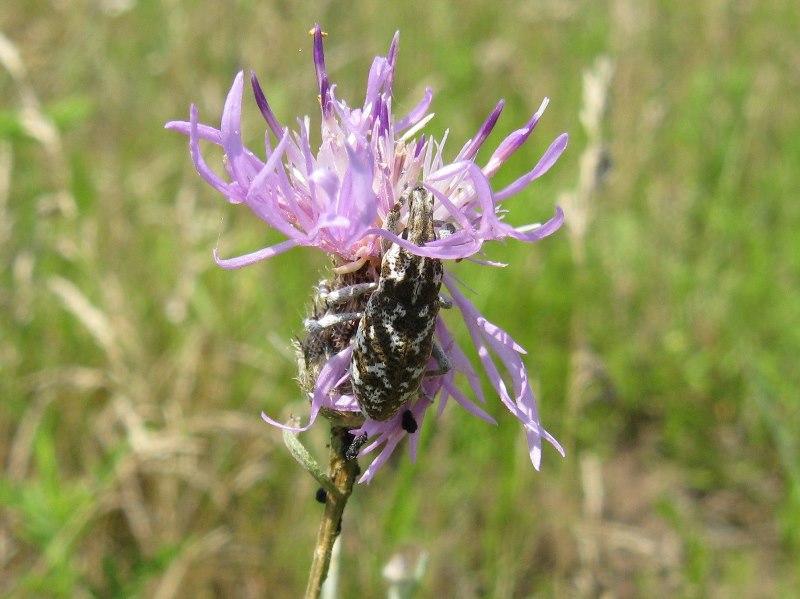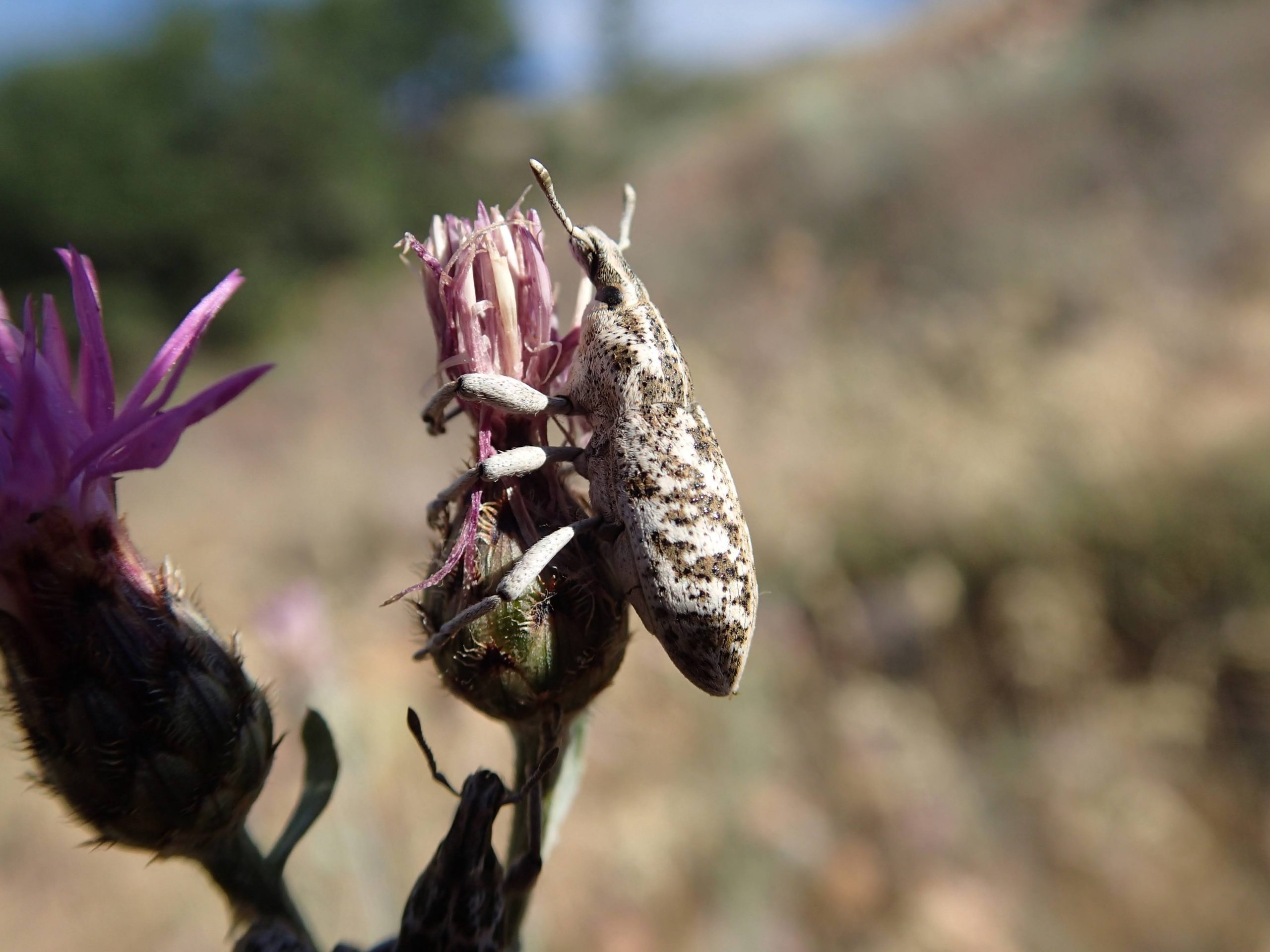Reference




OpenAI's Answer
Cyphocleonus achates, commonly known as the knapweed root weevil, is a significant biological control agent used to manage populations of invasive knapweed species, particularly spotted knapweed (Centaurea maculosa). This weevil has been introduced in various regions, including the United States, since 1988, where it has contributed to the decline of knapweed populations.
The primary mechanism by which C. achates controls knapweed is through its larval feeding habits. The larvae of this weevil bore into the roots of the knapweed plants, causing damage that impairs the plant's ability to absorb water and nutrients, ultimately leading to reduced growth and reproduction. Studies have shown that areas where C. achates has been established report noticeable declines in knapweed populations, indicating its effectiveness as a biocontrol agent (source: ScienceDirect).
Additionally, C. achates has been observed to interact synergistically with other biological control agents, enhancing the overall impact on knapweed infestations. For instance, when combined with the seed-head weevil Larinus minutus, the effectiveness of controlling knapweed can be significantly increased (source: ScienceDirect).
Overall, the introduction of Cyphocleonus achates represents a strategic approach to managing invasive knapweed species, leveraging natural predators to restore ecological balance and mitigate the negative impacts of these invasive plants.
Here are some images of Cyphocleonus achates and its impact:





Follow Up
Related
What are the main physical characteristics of the adult Cyphocleonus achates weevil?
Is Cyphocleonus achates known to prefer a specific type of knapweed?
In which U.S. national forest was Cyphocleonus achates released in summer 2009?
What types of knapweed are targeted by Cyphocleonus achates for biocontrol?